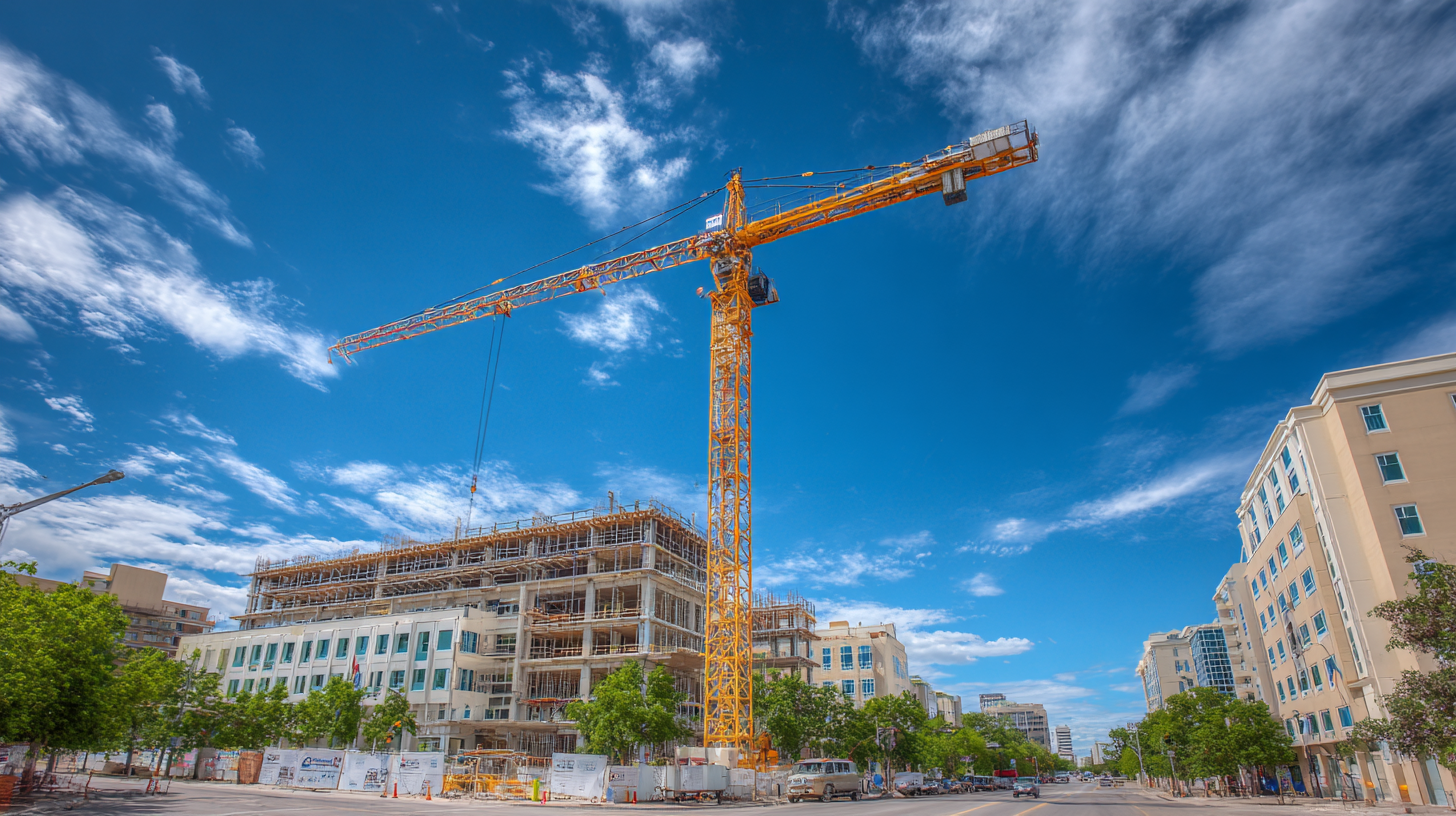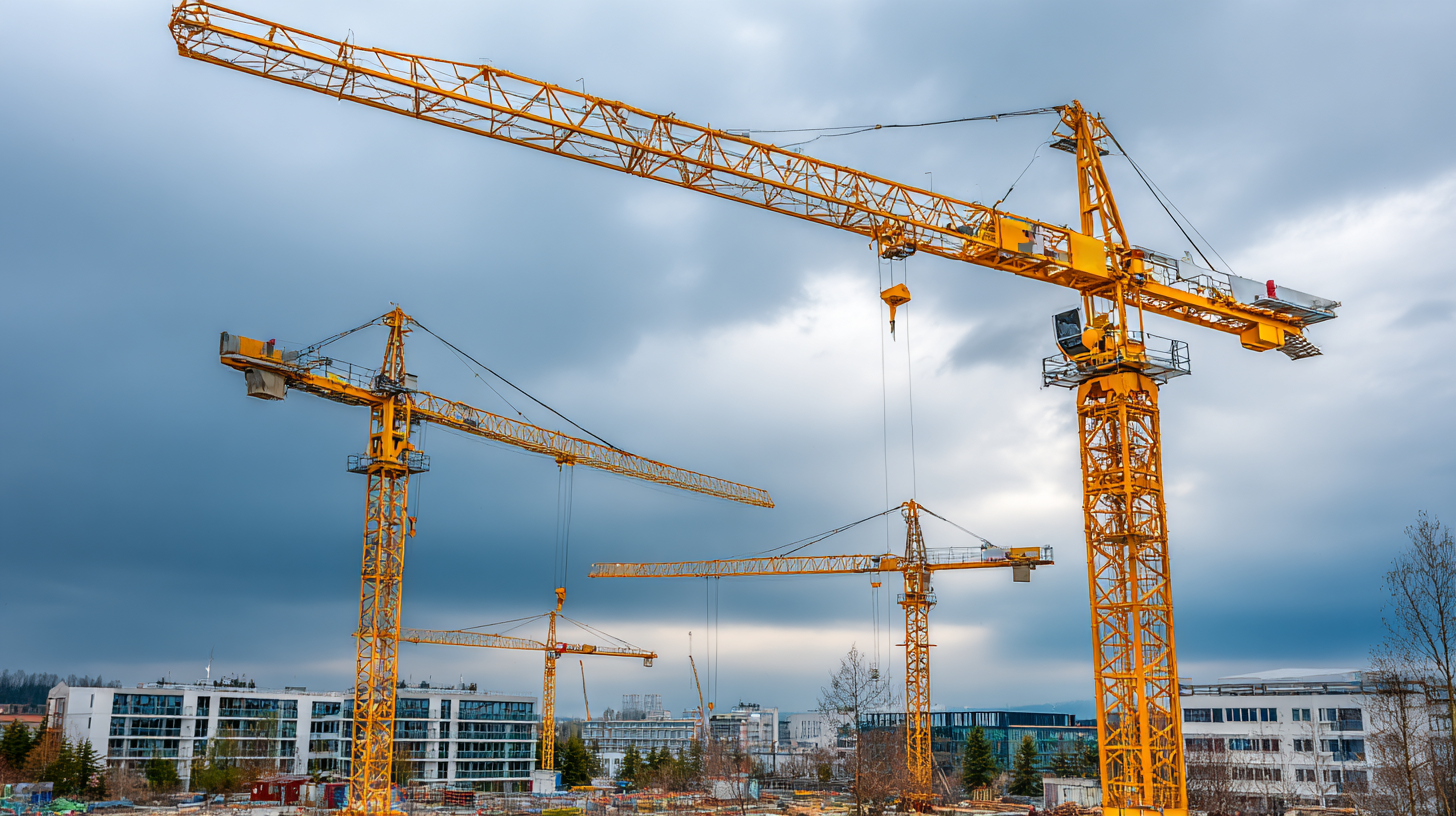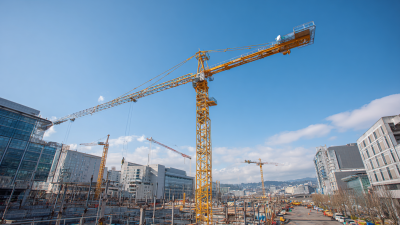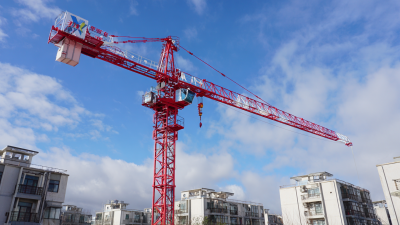In the ever-evolving landscape of construction machinery, the Potain Used Tower Crane stands out as a cornerstone for builders and contractors alike. As the demand for efficient and reliable lifting solutions grows, understanding the intricacies of this equipment is crucial for buyers looking to make informed decisions. Industry expert John Smith, a renowned figure in crane technology, emphasizes, “Investing in a Potain Used Tower Crane is not just about acquiring machinery; it’s about ensuring the safety and efficiency of your project.” His insights highlight the importance of selecting the right tower crane to meet specific project needs, balancing budget considerations with performance capabilities.
For potential buyers, navigating the array of options in the market can be overwhelming. The comprehensive guide aims to demystify the features, advantages, and purchasing strategies related to Potain Used Tower Cranes. With a focus on transparency and dependability, this guide will provide valuable information to help you understand what makes Potain a leader in the tower crane industry and how it fits into the future of construction. As we explore the top 5 considerations for purchasing a used Potain tower crane in 2025, we will equip you with the knowledge necessary to make an informed choice that aligns with your project goals.

Potain used tower cranes are vital in the construction industry, providing powerful lifting capabilities for a variety of projects. Understanding their functionalities and applications can significantly benefit potential buyers. These cranes are known for their versatility, enabling them to handle tasks ranging from erecting skyscrapers to facilitating large-scale construction projects. Their ability to lift heavy loads at impressive heights makes them an indispensable tool on job sites.

When considering the purchase of a Potain used tower crane, buyers should be mindful of a few critical tips. First, assess the crane's specifications, including its maximum lifting capacity and height capabilities. This ensures that the crane meets the specific demands of your projects. Additionally, it's essential to examine the crane's maintenance history and overall condition to guarantee reliability and safety.
Furthermore, with the global tower crane market projected to grow significantly from $6.14 billion in 2024 to $8.76 billion by 2032, investing in quality used equipment now can yield substantial returns. Look for trusted suppliers who offer certifications and warranties, which can provide peace of mind and protect your investment over time.
Potain used tower cranes have become essential in construction projects due to their distinctive features and advantages. These cranes are built for durability and flexibility, making them ideal for a variety of construction sites. The robust structure allows them to handle heavy loads while their extendable height capability makes them suitable for high-rise building projects. Additionally, the availability of used models provides an economical option for contractors looking to optimize their budget without compromising on quality.
Tip: When considering a used tower crane, always check its maintenance history and performance records. Investing in a crane that has been well-maintained can significantly reduce downtime and repair costs.
The advanced safety technology integrated into new tower cranes enhances not only the operational efficiency but also the safety of workers on-site. Features such as load moment indicators, anti-collision systems, and remote monitoring significantly minimize the risk of accidents during lifting operations. These advancements are crucial, especially in high-stakes environments where precision is paramount.
Tip: Always prioritize cranes with updated safety technology to ensure a secure working environment. Regular training on using these safety features can further enhance on-site safety for all personnel involved.

The demand for used Potain tower cranes is experiencing a notable shift in 2023, driven by an increase in infrastructure projects and rapid urbanization across the globe. According to industry analyses, the crane and hoist market is projected to reach a value of USD 43.75 billion, reflecting the growing necessity for lifting equipment in construction and other sectors. With a compound annual growth rate (CAGR) of 4.8%, the overall cranes market is expected to grow from USD 40.54 million in 2025 to USD 58.99 million by 2033, indicating a robust demand for both new and used models.
As more contractors seek cost-effective solutions amid rising material expenses, the market for used Potain tower cranes is becoming increasingly favorable. The global fixed crane market, valued at USD 10.26 billion in 2018, is projected to soar to USD 22.66 billion by 2032. This growth trend underscores the significant role that used equipment plays within the construction industry, allowing companies to leverage high-quality cranes without the financial burden of purchasing new machinery.
| Model | Max Load Capacity (ton) | Working Height (m) | Average Used Price ($) | Demand Trend (2023) |
|---|---|---|---|---|
| Potain MDT 178 | 8 | 45 | 25,000 | Increasing |
| Potain MCR 225 | 10 | 57 | 32,000 | Stable |
| Potain IGO 42 | 6 | 30 | 18,500 | Increasing |
| Potain MD 110 | 4 | 25 | 15,000 | Decreasing |
| Potain MC 85 | 5 | 39 | 20,000 | Stable |
When it comes to maintaining Potain used tower cranes, regular inspections and proactive maintenance practices are vital to ensuring their longevity. Operators should adhere to a structured maintenance schedule that includes checking the mechanical systems, wiring, and safety devices. It’s crucial to document all maintenance activities to spot recurring issues that may need further attention.
Tips: Always conduct a thorough visual check before using the crane. Look for any signs of wear and tear, such as cracks or corrosion on the structure. Additionally, ensure that all safety equipment is functioning properly. Keeping a detailed logbook can help identify patterns that may indicate underlying problems.
Another essential aspect of maintaining Potain used tower cranes is the importance of using genuine parts during repairs. Non-genuine parts can lead to decreased efficiency and even safety hazards. Make it a priority to partner with reliable suppliers who can provide authentic components to ensure the crane operates smoothly and safely.
Tips: Schedule routine lubrication for all moving parts, as this helps to prevent wear and extends the lifespan of the machinery. Engaging with experienced crane technicians for periodic assessments can also provide valuable insights into any potential weak points in your crane's performance.
The tower crane market has experienced significant growth, driven by the increasing demand for construction and infrastructure development worldwide. In 2022, the global tower crane market was valued at approximately $20 billion and is expected to continue to expand at a compound annual growth rate (CAGR) of around 4% over the next five years. Among the various types of tower cranes—such as hammerhead cranes, flat top cranes, luffing jib cranes, and self-erecting cranes—used tower cranes from established brands are becoming increasingly popular due to their cost-effectiveness and reliability.
When comparing Potain used tower cranes to other leading brands, one notable advantage is their robust build quality and reputation for longevity. Many construction firms opt for used models from reputable manufacturers as they can significantly lower project expenses while maintaining high lifting capabilities. Additionally, the resale value of these cranes tends to be higher due to brand recognition, making them a smart choice for budget-conscious buyers.
**Tips:** When considering purchasing a used tower crane, always check the maintenance history and operational hours to assess its condition. Additionally, ensure that the crane complies with current safety standards and regulations in your region to avoid potential liabilities during operation.








